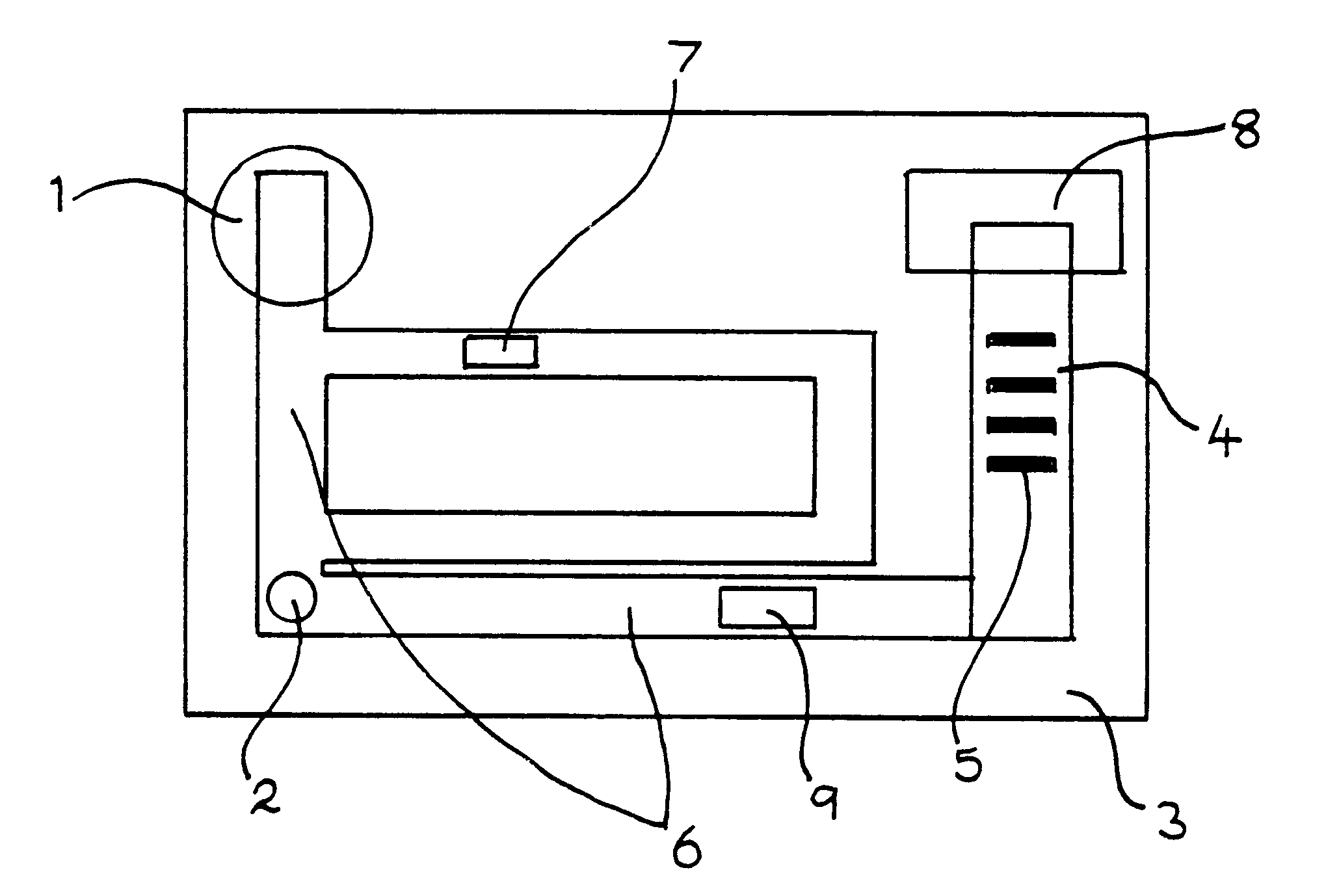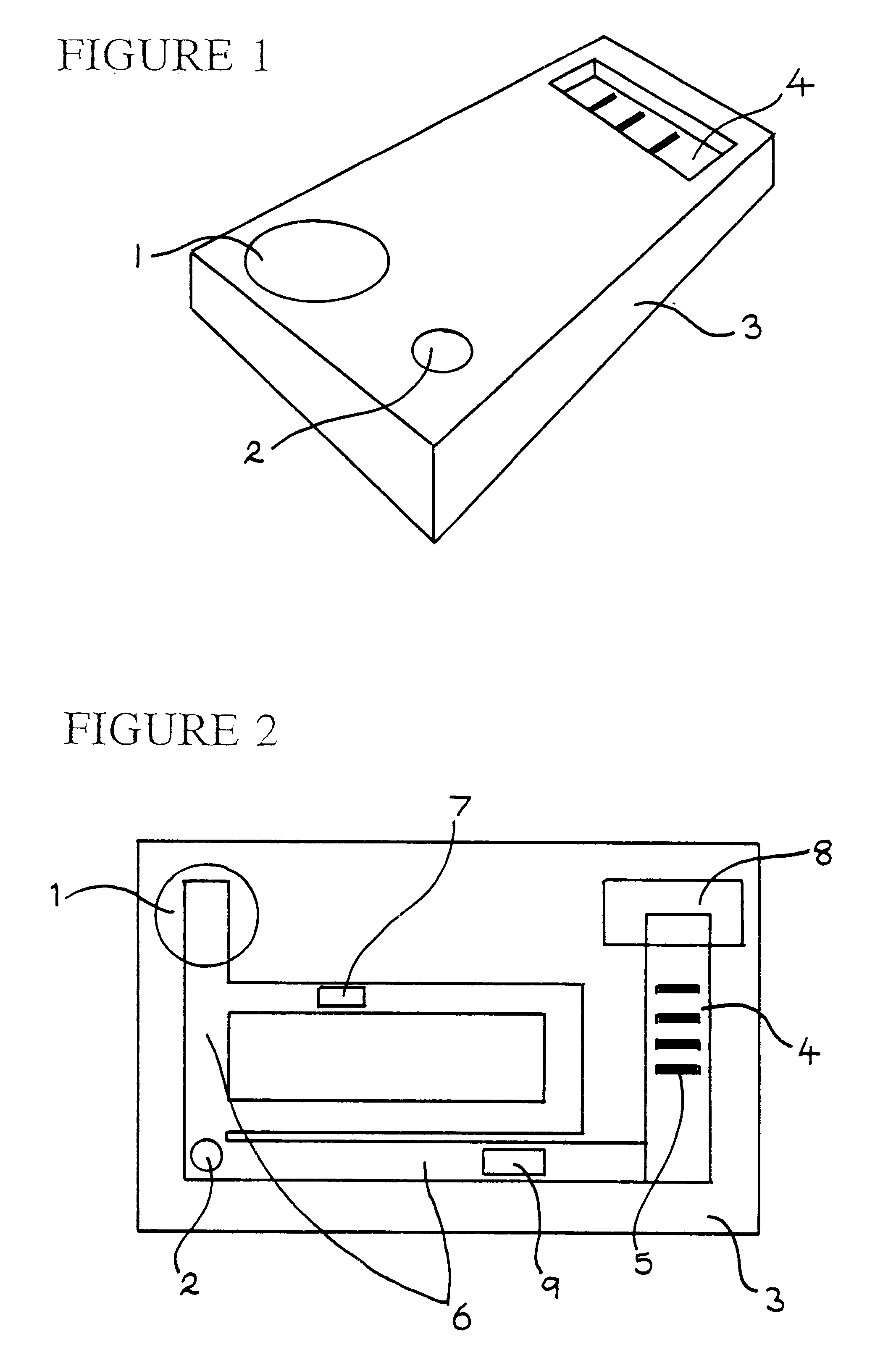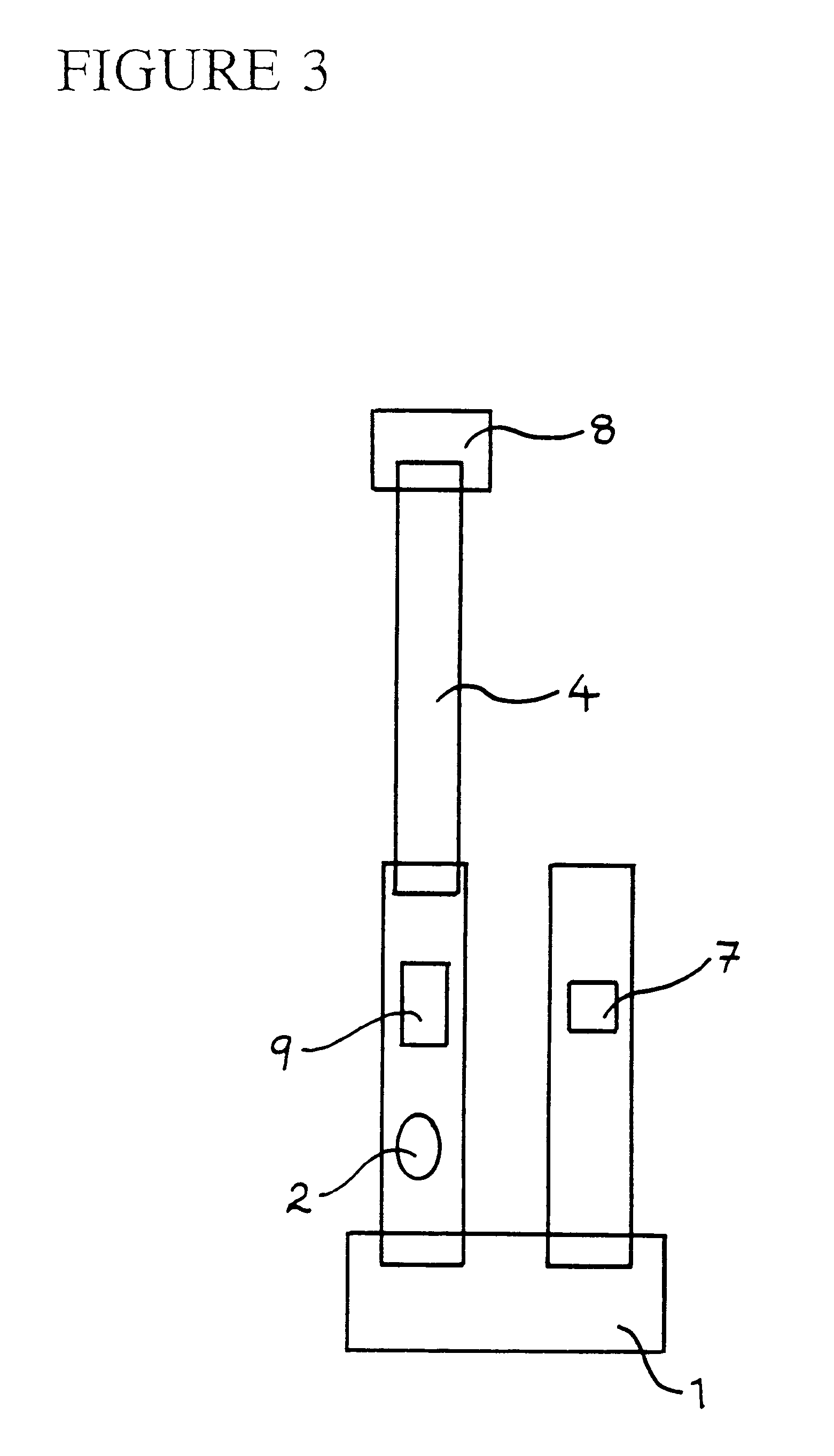Immunoassay apparatus for diagnosis
a technology of immunoassay and diagnostic equipment, which is applied in the direction of instruments, chemical methods analysis, analysis using chemical indicators, etc., can solve the problems of insufficient volume, more chance of user error, and other samples not readily available in such copious volumes
- Summary
- Abstract
- Description
- Claims
- Application Information
AI Technical Summary
Benefits of technology
Problems solved by technology
Method used
Image
Examples
example 1
A piece of Schleicer and Schuell plastic backed nitrocellulose (SSLU) 5 mm.times.60 mm was prepared as described above. Three lines of allergen were imprinted within the nitrocellulose 10 mm apart representing Timothy Grass / Cocksfoot Mixed allergens (2 mg / ml), Cat allergens (10 mg / ml, Bayer) and Dermatophagoides pteronyssinus extract (20 mg / ml, Smithkline Beecham). A piece of GF / A glass fiber filter paper (Whatman, 5 mm.times.35 mm) was attached to the proximal end of the nitro-cellulose and a piece of CHR17 (Whatman, 5 mm.times.40 mm) to the distal end by solvent adhesive to a plastics support, with a 5 mm overlap onto the nitro-cellulose surface. A 25 .mu.l sample of three serum pools RAST grade 3 to 4 positive for either grass pollen, cat or mite allergens or a normal goat serum pool were spiked with an equal volume of fresh human normal donor red blood cells, and added as a 50 .mu.l aliquot to the centre of the GF / A filter. Once absorbed, the free end of the filter was placed in...
example 2
A piece of Schleicer and Schuell nitro-cellulose (5.times.30 mm) was impregnated with mite extract as described above. A piece of GF51 (Schleicher and Schuell, 5.times.25 mm) was attached to the nitro-cellulose with a 5 mm overlap and both components fixed by adhesive to a plastics support. A 25 .mu.l aliquot of RAST grade 4 positive serum from a house dust mite positive patient pool was then added to the GF51 to a region previously impregnated with 0.5 .mu.g of biotinylated goat anti-human IgE in 10 .mu.l of Tris buffered saline. A 100 .mu.l aliquot of gold(40 nm) labelled goat anti-biotin in Tris buffer containing 1% w / v bovine serum albumin was then added dropwise to the GF51 filter. A positive band corresponding to reactivity of the serum with the mite extract was observed within 30 minutes.
The reactants, except for the mobile phase, are probably best stored within the apparatus in a solid form to enhance stability, as it is desirable for the apparatus to be stored at ambient co...
PUM
 Login to View More
Login to View More Abstract
Description
Claims
Application Information
 Login to View More
Login to View More - R&D
- Intellectual Property
- Life Sciences
- Materials
- Tech Scout
- Unparalleled Data Quality
- Higher Quality Content
- 60% Fewer Hallucinations
Browse by: Latest US Patents, China's latest patents, Technical Efficacy Thesaurus, Application Domain, Technology Topic, Popular Technical Reports.
© 2025 PatSnap. All rights reserved.Legal|Privacy policy|Modern Slavery Act Transparency Statement|Sitemap|About US| Contact US: help@patsnap.com



